Which Countries Drink The Most Alcohol - Top 10
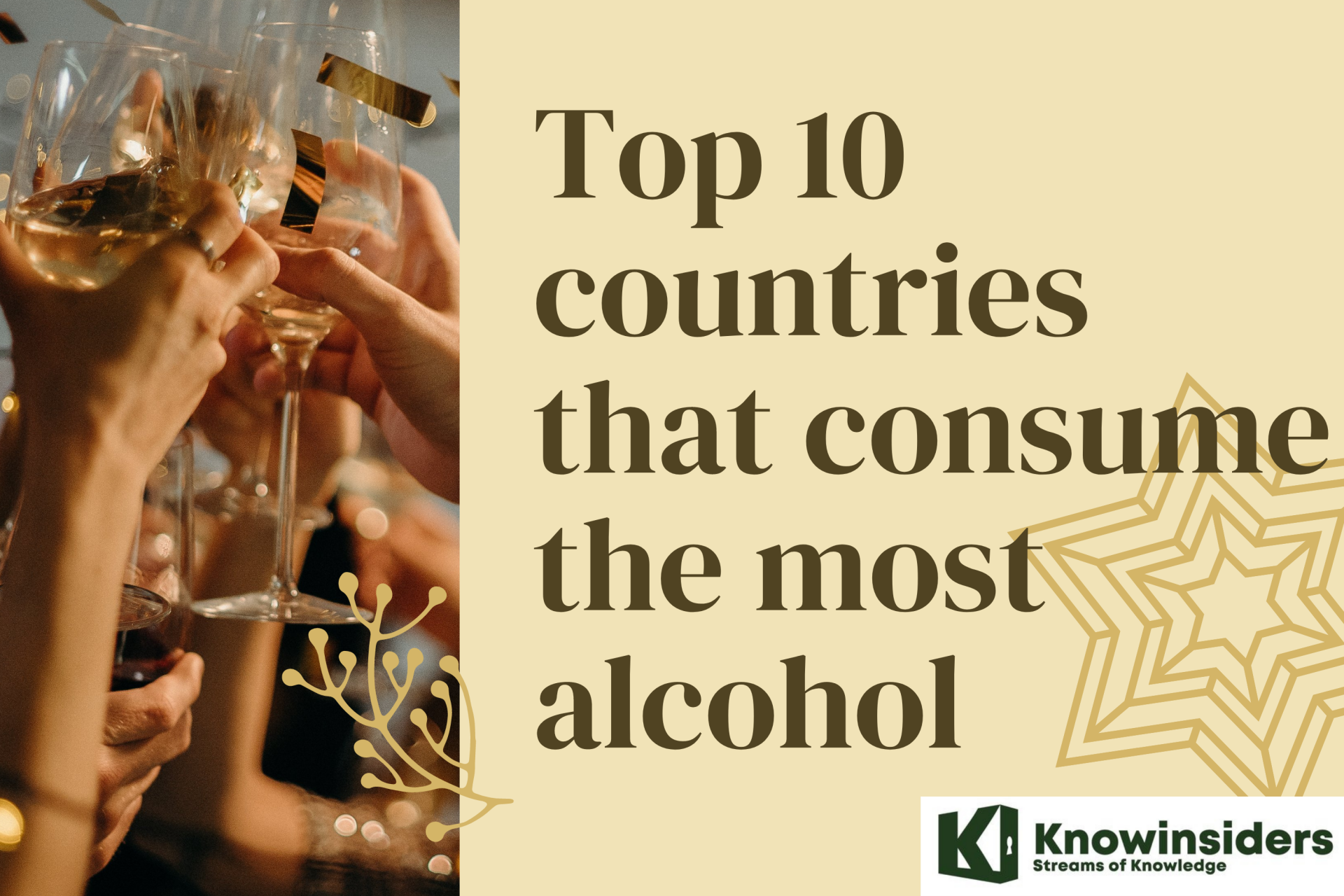 |
| Top 10 countries that consume the most alcohol |
The consumption of alcohol is a practice that is almost as old as human civilization itself. Historical records indicate that alcohol was made and consumed in many of the world’s great civilizations, including ancient Egypt, Greece, India, Mesopotamia, and China.
Today, the consumption of alcoholic beverages is integral to socialization and culture in many countries, especially in Europe.
What is alcohol drink?
Alcohol (ethanol or ethyl alcohol) is the ingredient found in beer, wine, and spirits that causes drunkenness.
Alcohol is formed when yeast ferments (breaks down without oxygen) the sugars in different food. For example, wine is made from the sugar in grapes, beer from the sugar in malted barley (a type of grain), cider from the sugar in apples, vodka from the sugar in potatoes, beets, or other plants.
Alcohol is classed as a ‘sedative hypnotic’ drug, which means it acts to depress the central nervous system at high doses. At lower doses, alcohol can act as a stimulant, inducing feelings of euphoria and talkativeness, but drinking too much alcohol at one session can lead to drowsiness, respiratory depression (where breathing becomes slow, shallow, or stops entirely), coma, or even death.
As well as its acute and potentially lethal sedative effect at high doses, alcohol has effects on every organ in the body and these effects depend on the blood alcohol concentration (BAC) over time.
What is alcohol consumption?
Alcohol consumption – especially in excess – is linked to a number of negative outcomes: as a risk factor for diseases and health impacts; crime; road incidents; and for some, alcohol dependence. Globally alcohol consumption causes 2.8 million premature deaths per year.
This entry looks at the data on global patterns of alcohol consumption, patterns of drinking, beverage types, the prevalence of alcoholism; and consequences, including crime, mortality and road incidents.
What is alcohol consumption across the world today?
The annual global average alcohol consumption is 6.4 liters per person older than 15 (in 2016). To account for the differences in alcohol content of different alcoholic drinks (e.g. beer, wine, spirits), this is reported in liters of pure alcohol per year.
To make the 6.4-liter average more understandable we can express it in bottles of wine. Wine contains around 12% of pure alcohol per volume so that one liter of wine contains 0.12 liters of pure alcohol. The global average of 6.4 liters of pure alcohol per person per year, therefore, equals 53 bottles of wine per person older than 15 (6.4l / 0.12l). Or to make it more memorable, around 1 liter of wine per week.
As the map shows, the average per capita alcohol consumption varies widely across the world.
We see large geographical differences: Alcohol consumption across North Africa and the Middle East is particularly low — in many countries, close to zero. At the upper end of the scale, alcohol intake across Europe is highest at around 15 liters per person per year in the Czechia, Lithuania, and Moldova. This equals around two bottles of wine per person per week.
Only slightly behind the Eastern European countries are Western European countries – including Germany, France, Portugal, Ireland, and Belgium – at around 12 to 14 liters. Outside of Europe, the only other country in this category is Nigeria.
List of top 10 countries that consume the most alcohol
(in liters of pure)
1. Czechia - 14.26
2. Latvia - 13.19
3. Moldova - 12.85
4. Germany - 12.79
5. Lithuania - 12.78
6. Ireland - 12.75
7. Spain - 12.67
8. Uganda - 12.48
9. Bulgaria - 12.46
10. Luxembourg - 12.45
*******
What are the top 10 countries with the highest per capita consumption of alcohol?
1. Czechia - 14.26
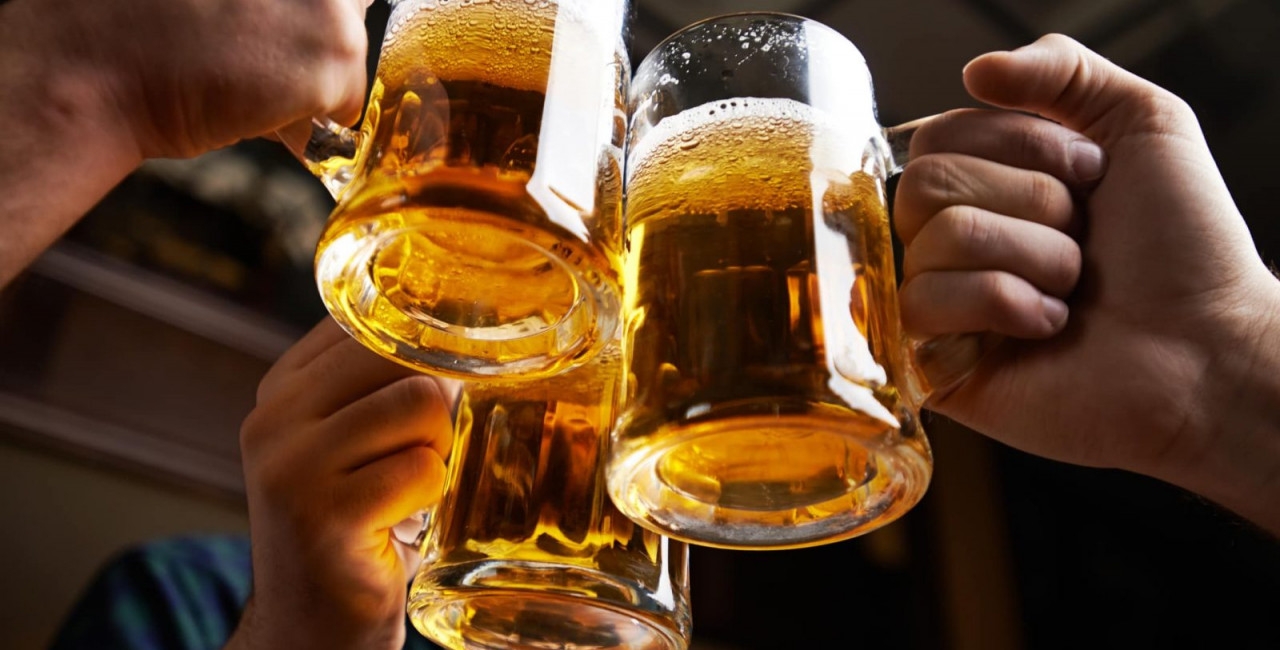 |
| Photo: expats |
Alcohol consumption as well as the prevalence of heavy episodic drinking in the Czech Republic belongs among the highest globally. In recent years the registered alcohol consumption in the Czech Republic has been very high; 9.8 liters of pure alcohol were consumed per capita in 2019. Recently, the prevalence of hazardous alcohol consumption in the adult population has reached 16.8-17.6% and harmful alcohol consumption 9.0-9.3%. From 12% to 17% of the adult population and 12% of the adolescent population were heavy episodic drinkers. Alcohol-related disorders are disproportionately higher (2-3 times) among men. Mortality for alcohol-related causes is fully attributable to alcohol (AAF = 100%) and their proportion in overall mortality is on increase.
In Czechia, which leads the world in per capita alcohol consumption, the consumption of alcohol, particularly beer, is viewed as good for the body. Indeed, there is a Czech proverb that says, “Beer makes beautiful bodies.” It is no wonder, then, that the beer industry is considered part of the Czechs’ national heritage. The Czechs also drink a lot of alcohol for historical reasons. When the Czechs lived under communist rule, drinking beer was one of the only social activities that were legal.
In Czechia, for instance, beer routinely goes with a traditional Czech meal that includes roasted pork, cabbage, and Czech dumplings.
2. Latvia - 13.19
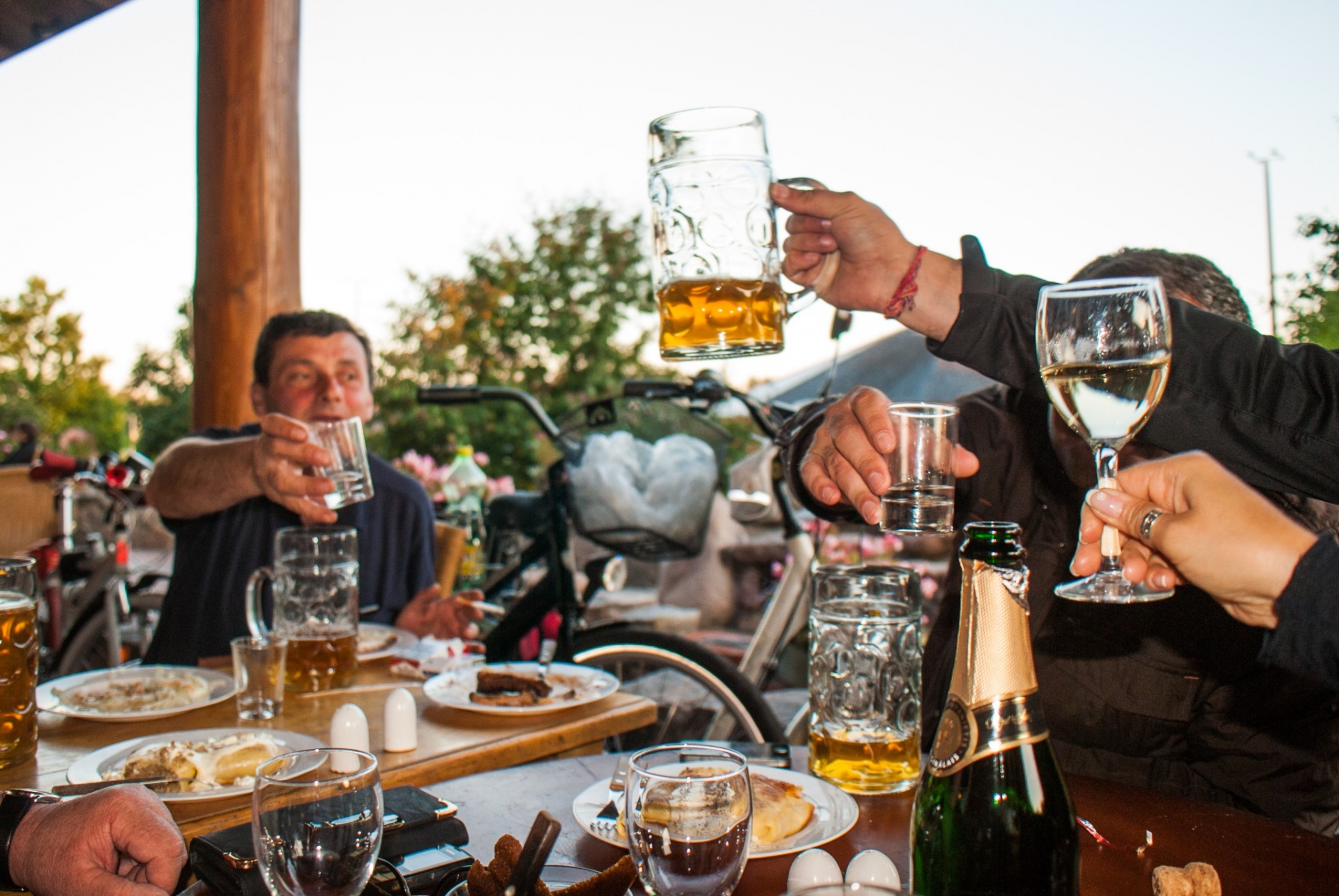 |
| Photo: urbanadventures |
Latvia has one of the highest levels of alcohol consumption – 12.8 liters of pure alcohol per capita per year, roughly equivalent to 2.6 bottles of wine or 4.9 liters of beer per week per person aged 15 and over. In addition, in Latvia, some population groups are at higher risk than others; specifically:
- 44% of adults engage in binge drinking at least once a month. This corresponds to drinking more than 80% of a bottle of wine or 1.5 liters of beer per occasion.
- Men consume 20.9 liters of pure alcohol per capita per year while women consume 6.1 liters per capita per year.
- Women are 30% more likely to binge drink monthly if they have completed higher education.
- 24% of girls and 25% of boys aged 15 have been drunk at least once in their life. Children who never experienced drunkenness are 44% more likely to perform well at school.
Based on current consumption patterns in Latvia, OECD simulations estimate that diseases and injuries caused by drinking above 1-1½ drinks per day lead to treatment costs equal to 3.7% of health expenditure and a reduction in the workforce productivity. Consequently, Latvia’s GDP is estimated to be 3.6% lower on average between now and 2050, excluding any impact on the alcohol industry. Due to a lower GDP, and to maintain a constant public debt-to-GDP ratio, Latvia has to raise additional revenues equivalent to an increase in tax of EUR 150 per person per year.
3. Moldova - 12.85
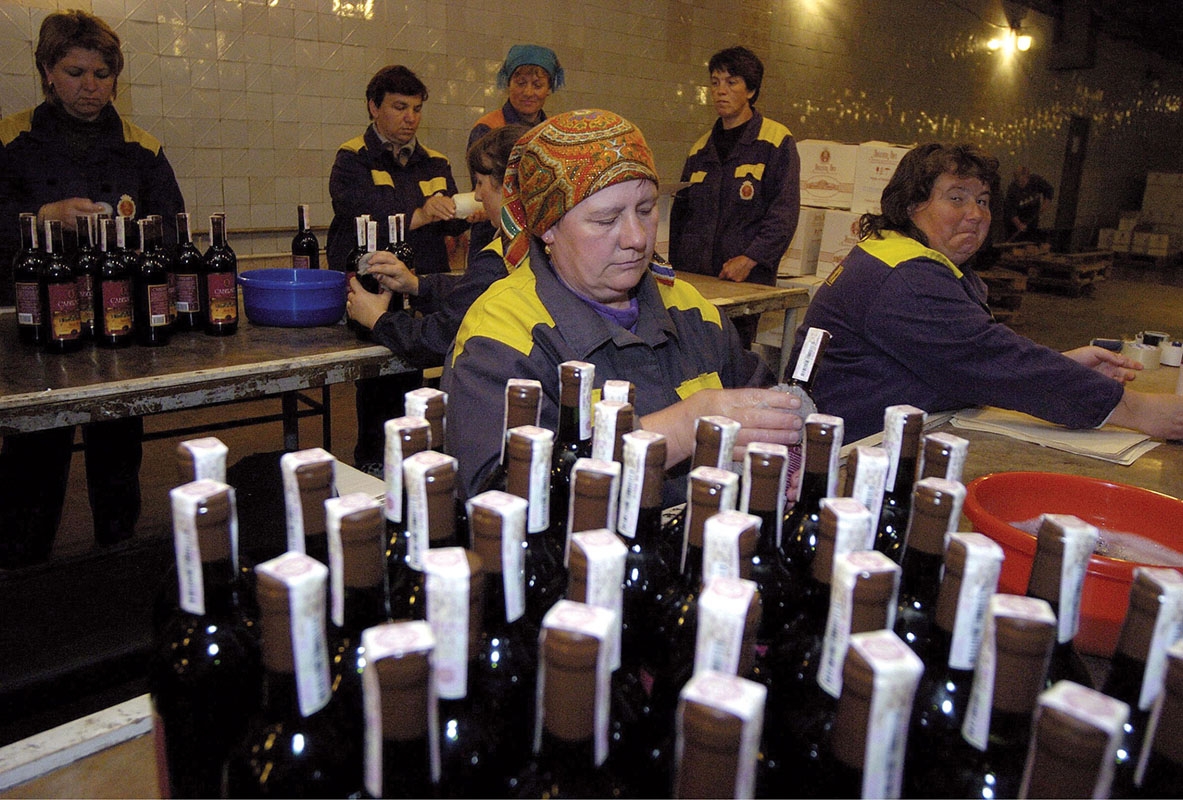 |
| Photo: foreignpolicy |
Citizens of the small, post-Soviet republic of Moldova are one of the world's biggest drinkers, knocking back the equivalent of more than 12.85 liters of pure alcohol per year, according to a report released by the World Health Organisation (WHO).
Moldovans drink nearly three times the global average of 6.1 liters per person per year.
Moldova has the highest levels of alcohol consumption in the world and the highest death rate linked to drinking. One in four deaths is related to alcohol while the world’s average is one in 20. The latest World Health Organization (WHO) data found that people over the age of 15 drink on average 15.2 liters of pure alcohol (including alcohol made at home or illegally) per capita each year, the equivalent of around 167 bottles of wine. Following closely is Lithuania with 15 liters and the Czech Republic with 14.4, while Europe’s average is 9.8. “Every family has a person with a drinking problem,” says Tudor Vasiliev, a psychiatrist specializing in addiction and a coordinator of the National Alcohol Control Program.
Accurate figures for Moldova are hard to reach because up to 70% of alcohol consumed is homemade wine, says Olga Penina, a lecturer of Public Health at Chisinau’s State University of Medicine and Pharmacy. The wine-drinking culture sets Moldova and Georgia apart from other post-Soviet countries, where people prefer to drink spirits. The “cult of wine is strong”, says Penina. “Fighting it is problematic.”
4. Germany - 12.79
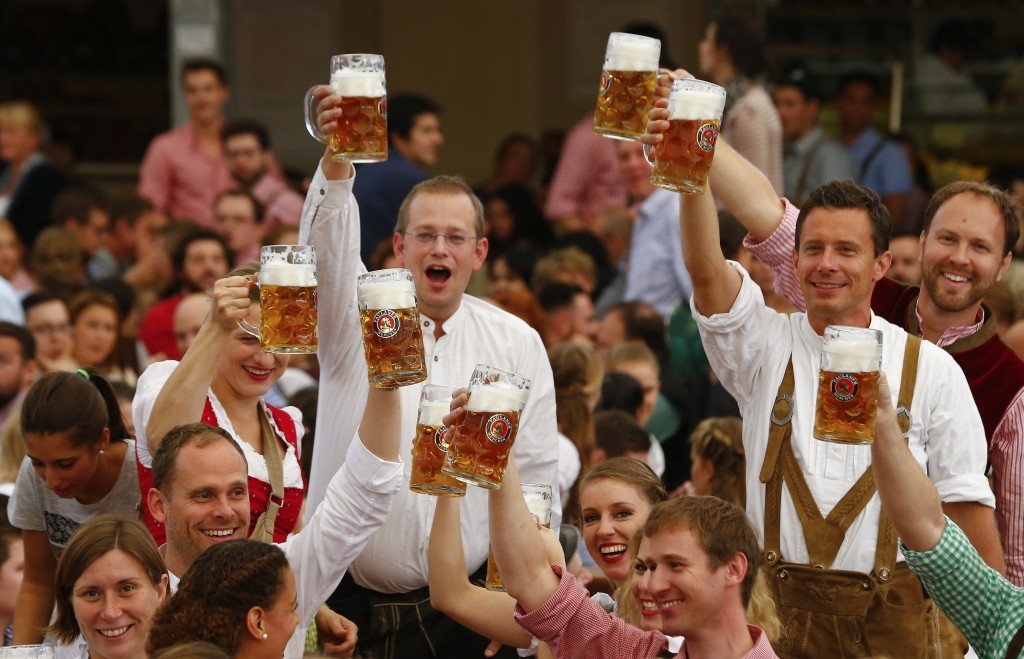 |
| Photo: pbs |
In Germany, for example, beer is synonymous with German culture. In fact, the Germans have a holiday entirely dedicated to the consumption of beer: Oktoberfest. The Irish, who are fifth on the list of countries with the most alcohol consumption per capita, also view alcohol with the same fervor as the Germans. The Irish pub is a cultural institution, as is the now world-famous beer brewed in Ireland known as Guinness. In Germany, for instance, a person can drink alcoholic beverages at the age of 16, before that person can drive a car or vote.
Germans drank on average 131.3 liters (34.7 gallons) of alcoholic beverages in 2018, according to a study published by the German Center for Addiction Issues (DHS). The study also found that 3 million Germans between the ages of 18 and 64 had an alcoholic disorder. Around 74,000 deaths per year in Germany are caused by alcohol or a combination of alcohol and tobacco, according to the study.
"Experts point out in the [study] that alcohol consumption is always risky," the DHS said. "Therefore, as little or no alcohol as possible should be drunk."
5. Lithuania - 12.78
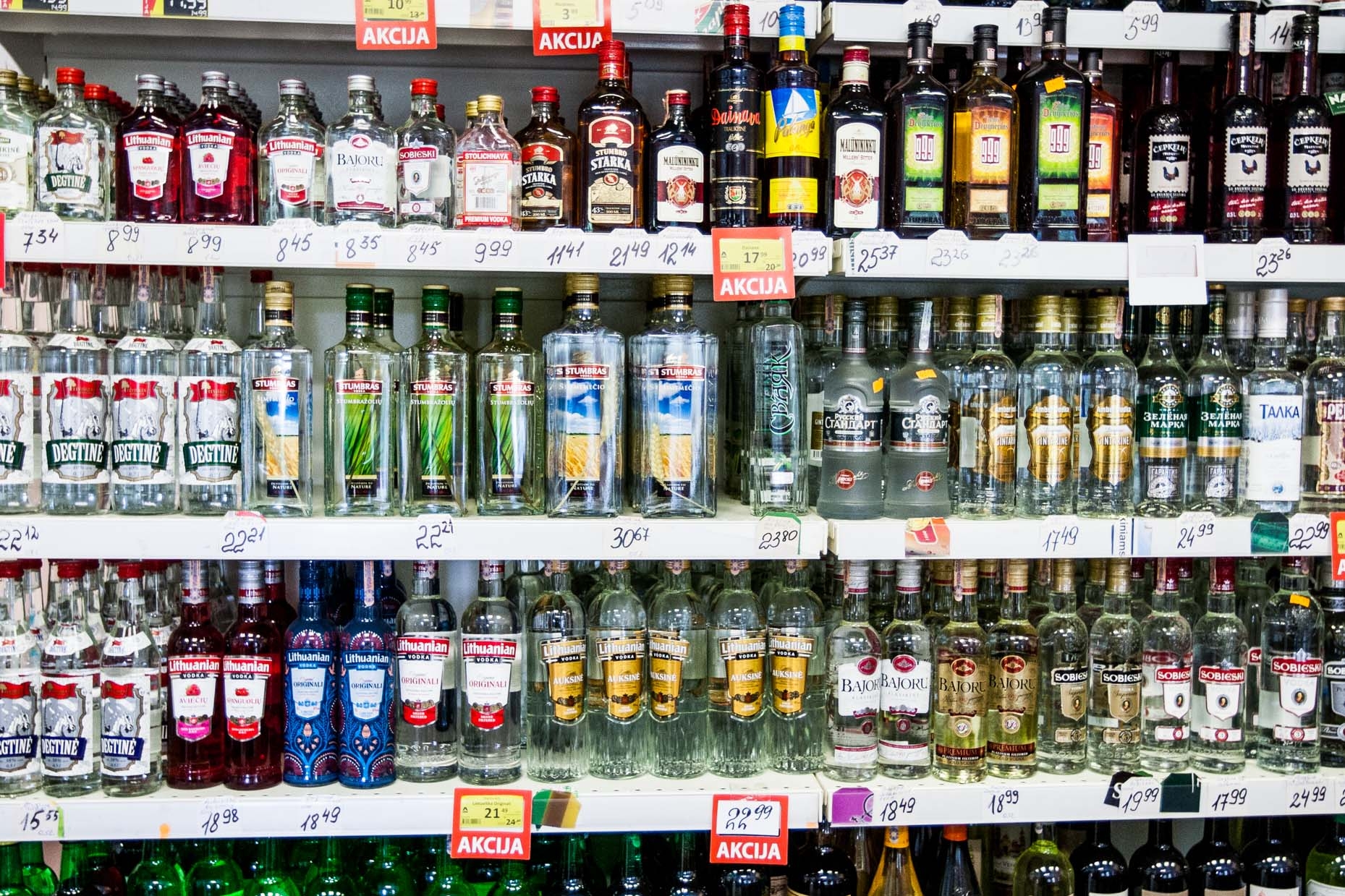 |
| Photo: lithuaniatribune |
An average Lithuanian consumes a glass of beer, a large glass of wine, or 80 grams of vodka per day, the country's statistics office said.
Beer is by far the most popular alcoholic drink in the country. Lithuanians also consume spirits, though drink less wine.
“We have re-calculated the amount [of total alcohol consumption] in terms of the most commonly consumed alcohol, and one resident aged over 15 consumes one glass of beer, quite a large glass of wine or 80 grams of vodka,” Jūratė Petrauskienė, the head of Statistics Lithuania, told a press conference on Friday.
“Lithuanians mostly prefer beer, which makes 44 percent of the total consumer alcohol, and consume quite a lot of spirited drinks and alcoholic cocktails, while wine accounts for 15 percent of total alcohol consumption,” Petrauskienė said.
Statistics Lithuania has also reported that Lithuania's legal alcohol consumption per person aged over 15 amounted to 11.4 liters last year, up by 0.3 liters compared to 2019.
Do men or women drink more?In most countries, men drink at least three times as much alcohol, on average, as women. For example, Czechia's combined average is 14.6 liters, but the per-gender averages are 6.9 liters for women and 22.0 liters for men (both of which are global highs). In some countries, the disparity is even higher. In Turkmenistan, for instance, men drink 5.26 liters/year, more than five times as much as women (1.03 liters/year). |
6. Ireland - 12.75
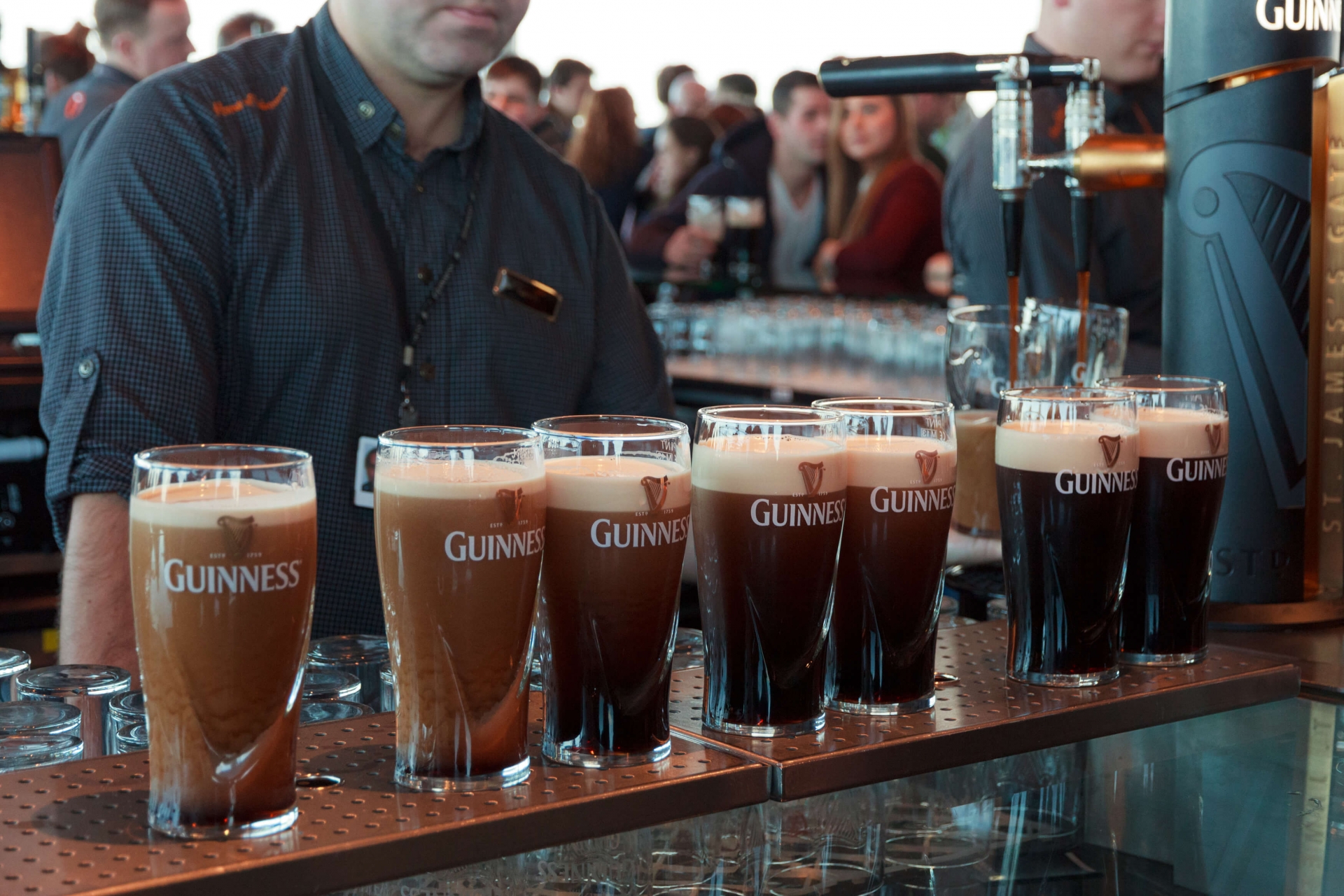 |
| Photo: tenontours |
The HRB has found that while alcohol consumption levels in Ireland have plateaued since 2013, people’s consumption remains significantly higher than the Government’s 2020 target of no more than 9.1 liters of pure alcohol per person a year. In 2019, on average every person in Ireland aged 15 and over drank 10.8 liters of pure alcohol a year – the equivalent of either 40 bottles of vodka, 113 bottles of wine, or 436 pints of beer. Given one in four people in Ireland don’t drink at all, actual consumption rates among those who do drink would be much higher than this.
The report provides a number of insights into how consumption patterns vary between age groups and genders. For example:
- Males aged 25-34 years are more likely to be classed as hazardous drinkers and are more likely to present with alcohol-related self-harm and suffer death due to poisoning.
- Older adults aged 65 and over tend to drink less; however, of those who do drink, one-third are hazardous drinkers, with over 40% of men over 65 engaging in monthly binge drinking.
- Three in five drinkers over 60 years who take medication that interacts with alcohol have reported that they continue to drink while on such medication.
7. Spain - 12.67
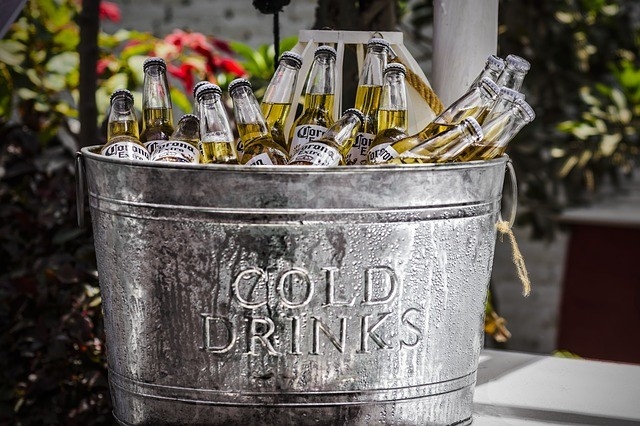 |
| Photo: suspanish |
Thirteen percent of people in Spain drink alcohol every day, a similar rate to Italy, where 12 percent enjoy a tipple on a daily basis, and only behind Portugal, where 20 percent of people have an alcoholic drink seven days a week.
That puts Spaniards above the EU average of 8.4 percent daily drinkers, data published by Eurostat in July 2021 reveals.
This consistent alcoholic intake among Spaniards is far higher than in countries such as Sweden (1.8 percent daily drinkers), Poland (1.6 percent), Norway (1.4 percent), Estonia (1.3 percent) and Latvia (1.2 percent).
However, the survey that looked at the frequency of alcohol consumption in people aged 15 and over shows that weekly and monthly drinking habits among Spaniards are more in line with European averages.
In Spain, for example, people drink alcohol in large quantities often because it is a staple during meals. In fact, it is customary in several European countries to enjoy an alcoholic beverage with certain types of foods that are consumed as part of a country’s culture.
Read More: Top 10 Rose Wines That Should Drink At Least Once in Your Life
8. Uganda - 12.48
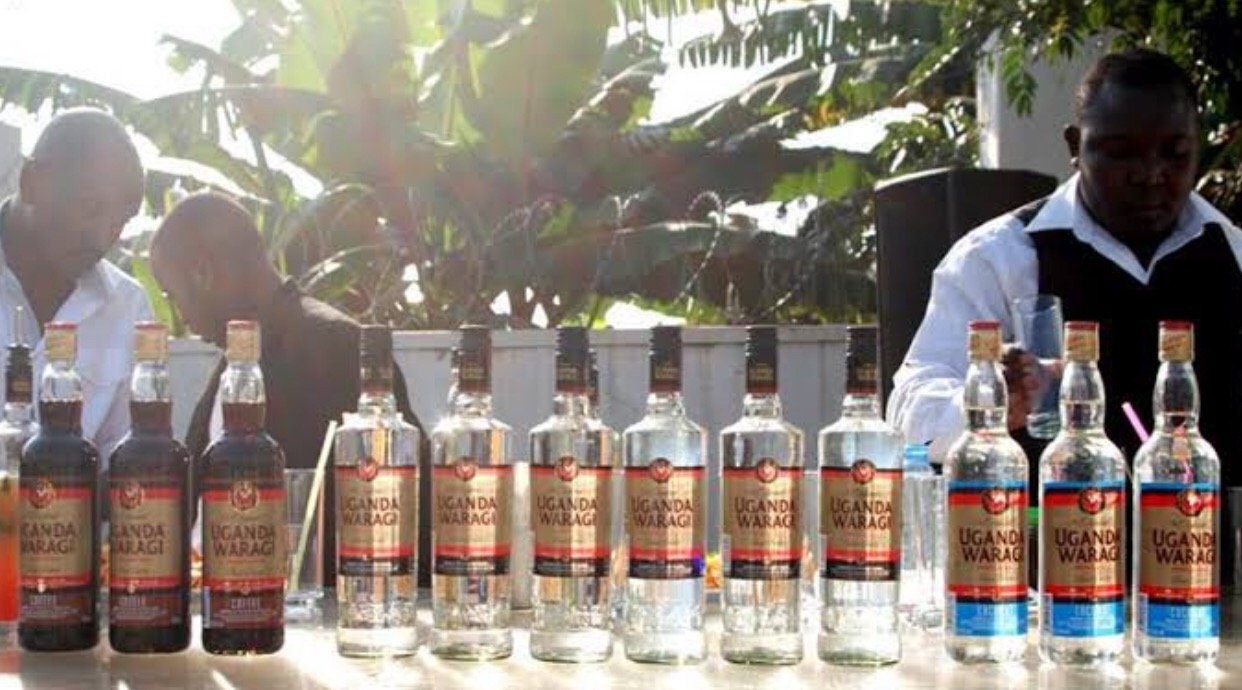 |
| Photo: cityscrollz |
There is only one country on the list of ten countries that consume the most alcohol per capita that is not in Europe. That is the country of Uganda, located in Eastern Africa. Uganda’s love affair with alcohol is mainly a result of the illegal production of hard liquor, commonly known as moonshine. The production of illegal alcohol is a major source of household income in the country, where a good income is hard to attain legally. But it comes at a cost. The consumption of unregulated alcohol in Uganda has been tied to a greater incidence of poverty in the country, not to mention adverse effects on people’s health.
Indeed, alcohol is commonly associated with socio-economic distress and health issues. In Europe, however, the substance seems to be viewed more positively, as part of a country’s customs and traditions. In some of Europe’s countries, it is almost obligatory for someone having a meal to enjoy a glass of beer, wine or some other alcoholic beverage along with it. Thus, a person who does not enjoy alcohol may have a hard time fitting into society if that society is in a European country that ranks among the top 10 countries in alcohol consumption per capita.
9. Bulgaria - 12.46
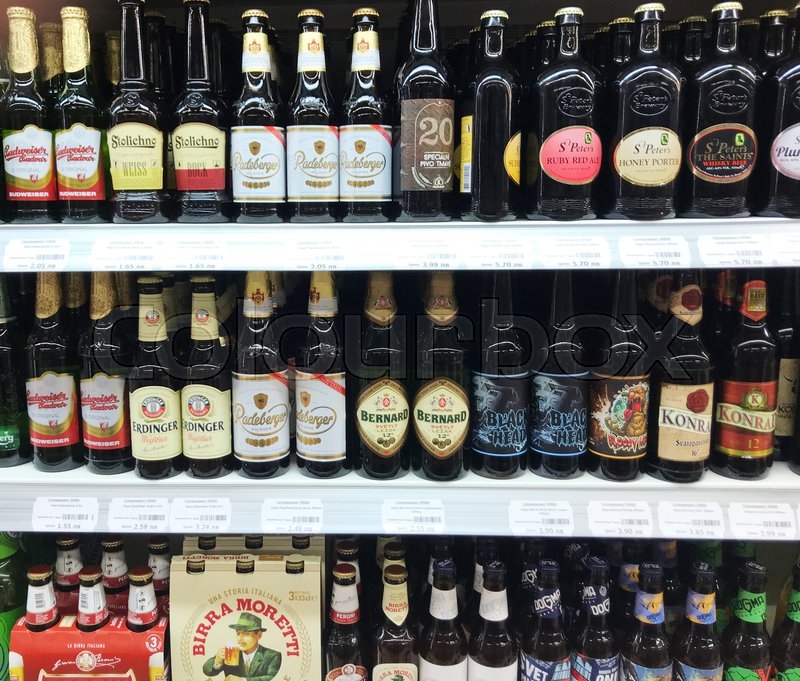 |
| Photo: colourbox |
About 2.3 percent of Bulgarians are alcohol-dependent and 6.9 percent have alcohol use disorders, according to a report by the World Health Organisation.
By gender, there are substantial differences: among Bulgarian men, the percentage with alcohol dependence is 4.3 percent while among women, it is 0.4 percent, the WHO report said, citing figures for 2016.
The percentage of Bulgarian men with alcohol use disorders is 12.2 percent while the percentage for women is 1.9 percent.
In both cases, the rate is below the average for the WHO European region, where the percentage for alcohol use disorders is 8.8 percent and for alcohol dependence is 3.7 percent.
WHO calculated that in Bulgaria, the years of life lost due to alcohol consumption adds up to about four.
Alcohol consumption in Bulgaria is 43 percent spirits, 39 percent beer, and 17 percent wine, the WHO report said. The report also showed a slight increase in alcohol consumption in Bulgaria, comparing 2016 with 2010.
10. Luxembourg - 12.45
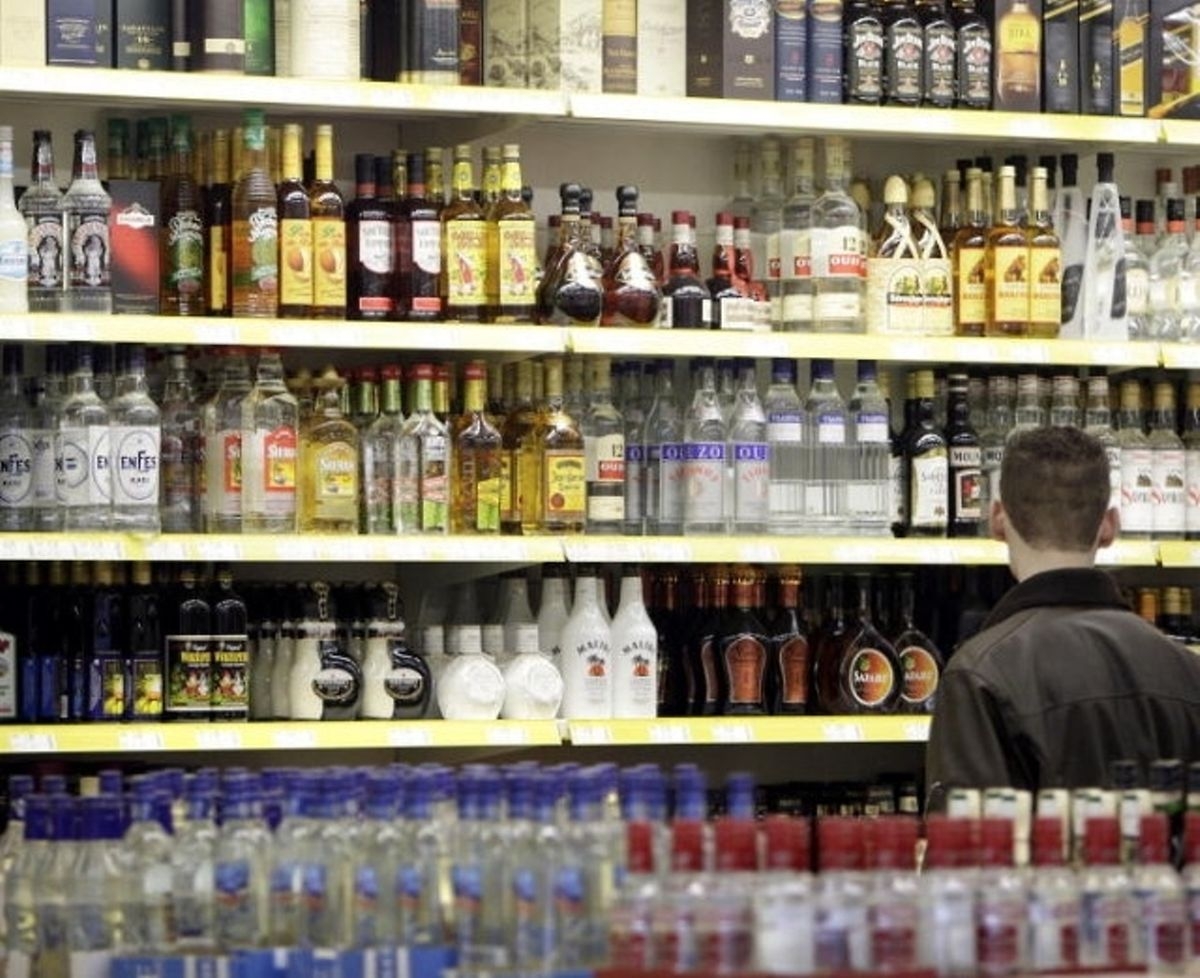 |
| Photo: luxtimes |
Luxembourg consumes twice as much alcohol per year as the world average – 11.9 liters of pure alcohol, the equivalent of roughly 500 bottles of beer – according to statistics published by the World Health Organisation.
In Luxembourg, wine was most popular among drinkers, making up 43 percent of alcohol consumed, followed by beer (36 percent) and spirits (21 percent).
There were also a number of abstainers recorded in Luxembourg in 2010. In total 6.1 percent of the 15+ population were listed as not having had a drink in the past 12 months. When they are taken out of the equation, alcohol consumption rises to 12.7 liters per capita.
This compares to 12.8 liters in Belgium, 12.9 liters and France and 14.7 liters in Germany – leaving Luxembourg the soberest nation in the Greater Region.
High Consumption Of Alcohol In EuropeIn fact, 9 out of 10 countries with the highest per capita consumption of alcohol are in Europe. Uganda, located in Africa, is the only non-European country that counts itself among the leaders of per capita alcohol consumption. People in the European Union consume more alcohol than in any other part of the world, drinking an average of 8.71 liters, or around 25 beer-sized glasses of pure alcohol, per person a year, according to the latest European health report from the World Health Organization. The agency called alcohol consumption a major public health problem, along with tobacco use and being overweight or obese. Heavy drinking can result in alcohol poisoning or car accidents, and over the long term can lead to cirrhosis or breast cancer. It also has been linked to increased violence, homicides, and suicides. Throughout Europe, the legal drinking age is 16 for wine and beer, and 18 for other types of alcohol. In Europe, 4 percent of people have alcohol dependence and 7.5 percent have alcohol use disorder – in both cases higher than any other region. |
 Top 25 Most Beautiful Currencies In The World Top 25 Most Beautiful Currencies In The World What countries have the most beautiful banknotes or currencies? Let's explore Top 25 Most Beautiful Banknotes In The World. |
 Top 10 Largest Oil and Gas Companies in the World Top 10 Largest Oil and Gas Companies in the World Let’s take a look at the list of the top ten highest-earning oil and gas companies in 2021, according to Market Cap. |
 10 Best Car Insurance Companies In New Mexico With Cheapest Quotes and Good Services 10 Best Car Insurance Companies In New Mexico With Cheapest Quotes and Good Services Driving with an uninsured car in New Mexico can result in a high penalty, as car insurance is mandatory in the state. |


























